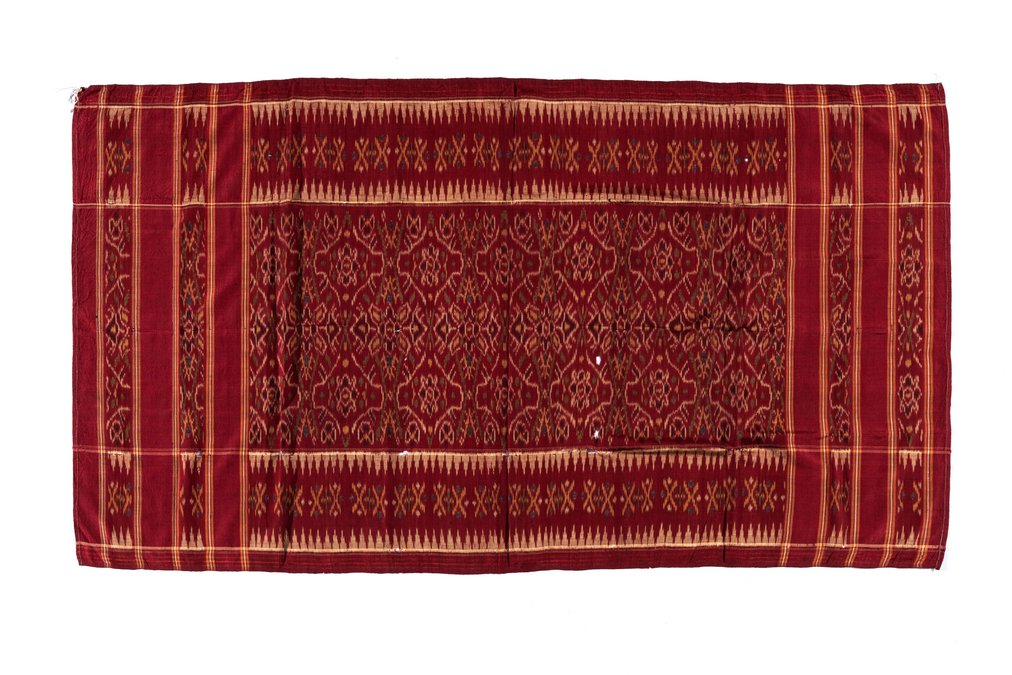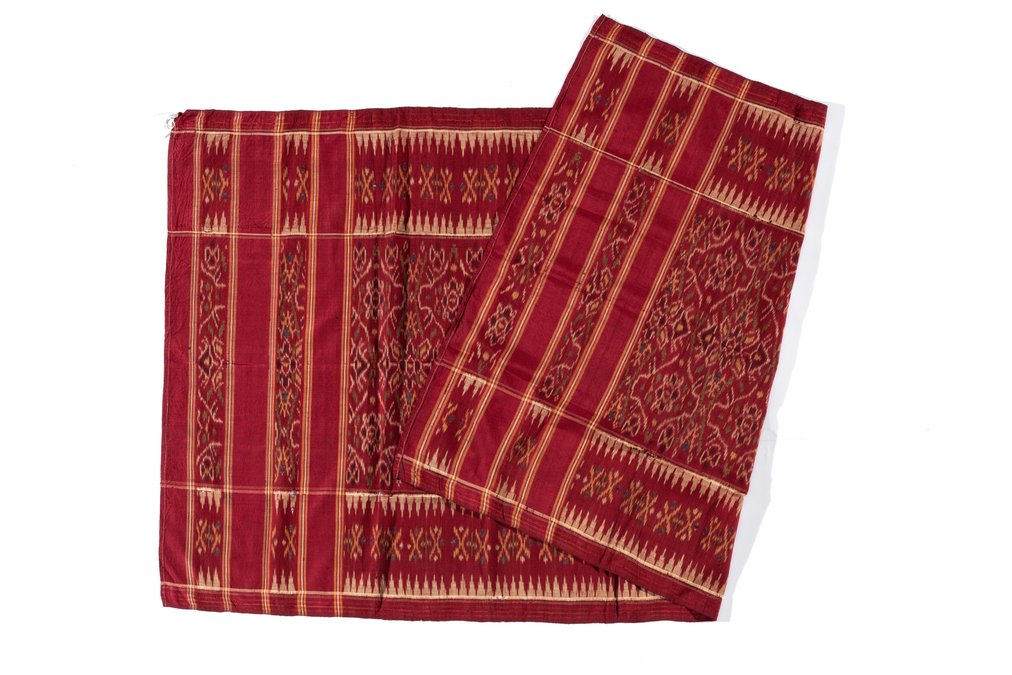Ritual silk cloth (kain cepuk) E097448
- World Cultures
- Indonesian Collection
On this page...
This textile belongs to a category of ritual cloths known as cepuk and are made by a method of patterning known as weft-ikat ‘endek’ which involves dyeing the weft threads with a pattern before the textile itself is woven. In the case of textiles known as warp-ikat the weft threads are never resist-dyed. However, to make cepuk the dye resist technique is also applied to weft threads so that the weft thread carries the patterns. This is a slower process than the warp-ikat because after each weft is passed it must be carefully adjusted to make sure the pattern remains clear.
Cepuk are an indigenous Balinese adaption of Indian ‘patola’ (the imported double-ikat textiles from Gujarat, India) and may be used in place of real ‘patola’ in ritual events. The structural design is basically the same for all cepuk textiles. They are set against a background of deep red with a strictly patterned frame of fine monochrome lines. An important feature is the rows of white triangles or arrow-heads running down longitudinal borders which the Balinese refer to as ‘the teeth of the Barong’ (gigi barong), the protective lion spirit. The design in the centre field of this cloth is known as ‘cepuk cendana kawi’, visually it is very similar to the ‘eight-pointed’ star ‘jilamprang’ motif seen on ‘patola’. The ritual hierarchy of cepuk patterns might be related to their similarity to patola cloths and this pattern is considered the highest class – ‘cendana’ - a type of fragrant sandalwood; ‘kawi’ means creation.
The word cepuk means ‘being brought face to face with someone’, particularly with a divine power, and refers to the great protective qualities of the cloths. Cepuk are used at temple festivals as offerings and decorations, as shrouds or underlay for a corpse, as barriers between the sphere inhabited by the deities and the worldly sphere of humans and as part of remedies for serious diseases and sorcery. When adopted as items of clothing they are worn by both women and men, often as inner hip cloths ‘sinjang’, and are also part of costume worn by the powerful witch Rangda, whose supernatural powers are harnessed during temple festivals for their exorcistic functions. Recently a Balinese cultural leader stressed that Balinese should restrict the use of cepuk cloths to particular ceremonies, specifically as the underlay for a corpse ‘tatakan kajang’ and to the figures of Rangda and her attendant Celuluk. 1
In addition to the potency of their patola-like design, Balinese believe that cepuk cloths derive their force from the hand-spun cotton used to make them. The island of Nusa Penida, a small island off the east coast of Bali is one centre of these textiles. The Balinese believe the island is a centre for evil spirits, and it is commonly believed that all cepuk cloths come from the island, though there were centres of production in Tabanan, Gelgel and Buleleng. John Yu collected several examples of cotton cepuk, this old one is exceptional because it has been made with silk.
In addition to the potency of their patola-like design, Balinese believe that cepuk cloths derive their force from the hand-spun cotton used to make them. The island of Nusa Penida, a small island off the east coast of Bali is one centre of these textiles. The Balinese believe the island is a centre for evil spirits, and it is commonly believed that all cepuk cloths come from the island, though there were centres of production in Tabanan, Gelgel and Buleleng. John Yu collected several examples of cotton cepuk, this old one is exceptional because it has been made with silk.
Explanations
- Weft - the set of threads that are woven across the loom (or horizontal threads).



